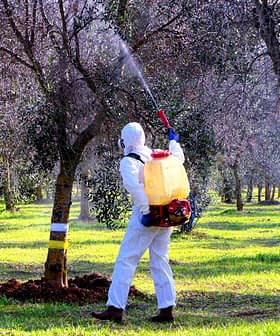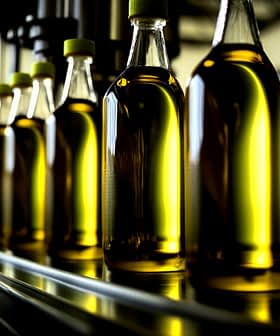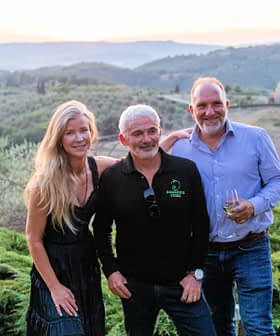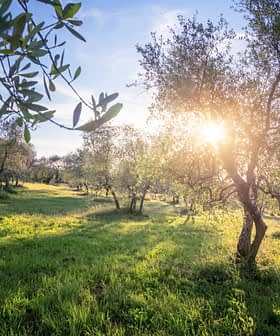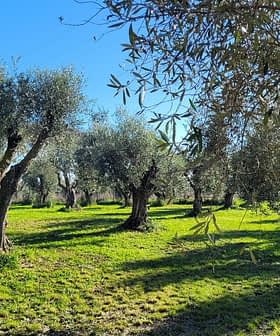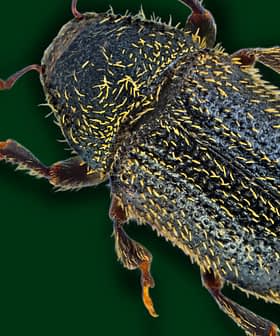Safeguarding Unique Olive Farming Traditions on Italy’s Pantelleria Island
Olive farming on the Sicilian island has unique features resulting from a peculiar pruning and training system that encourages horizontal growth.
 Alessandra, a Resilea associate, is pruning an olive tree. (Photo: Gianpaolo Rampini)
Alessandra, a Resilea associate, is pruning an olive tree. (Photo: Gianpaolo Rampini)  5.1K reads
5.1K readsThe unique olive farming system on the Sicilian island of Pantelleria involves horizontal growth to optimize water use and withstand wind, but this practice is at risk of disappearing due to generational turnover. The Resilea association is working with the University of Palermo to preserve and transmit this farming knowledge, aiming to create a community company to make the practice economically sustainable and protect the island’s centuries-old olive trees and cultural heritage.
Olive farming has unique characteristics on the Sicilian island of Pantelleria, the Italian region closest to Africa.
The olive tree is cultivated according to a particular system, which induces its horizontal growth.
The system prevents the trees’ height from exceeding that of the adjacent dry stone wall, enabling the trees to optimize their water use and cope with wind.
An economic income for the small producers on the island is necessary to better protect these trees, many of which are centuries-old, and this sustainable and resilient farming practice.
For centuries, this agricultural practice has allowed olive tree cultivation and olive oil production in the volcanic island’s extreme climate, characterized by dryness and storms.
This olive tree-growing system is at risk of fading due to the lack of generational turnover.
The Resilea association, whose goals include reconstructing and strengthening local communities, collaborates with the University of Palermo to preserve and disseminate the knowledge system behind this farming practice, also known as “The art of Pantelleria’s prostrate (or creeping) olive tree.”
See Also:Rome’s Olive Oil Production on Public Farm Supports Community, Sustainability“After working for several years in developing countries, we settled in Italy, in Pantelleria, in 2013, intending to preserve the knowledge underpinning this method of adaptation to the local environment devised ages ago by the island’s growers,” Gianpaolo Rampini, Resilea’s president, told Olive Oil Times.
During his work abroad, Rampini said the disappearance of rural communities and their cultures globally is a significant threat to cultural diversity.
“Our goal is to safeguard the set of non-written theoretical and practical elements, defined by research as local ecological knowledge, which is the cornerstone of rural communities,” he said.
Pantelleria’s olive tree pruning and training system involves dry farming techniques. It prevents the effects of ‘matticate,’ a word from the local dialect that refers to strong gusts of wind blowing from the sea inland during storms.
“This climate resilient practice emerges today as an element of interest in the framework of ongoing climate change,” Rampini said. “It became necessary in the past, since the island had no lakes and rivers and not even a water desalination plant like today, and each inhabitant collected the rainwater through the roof of their ‘dammuso,’ the island’s traditional house.”
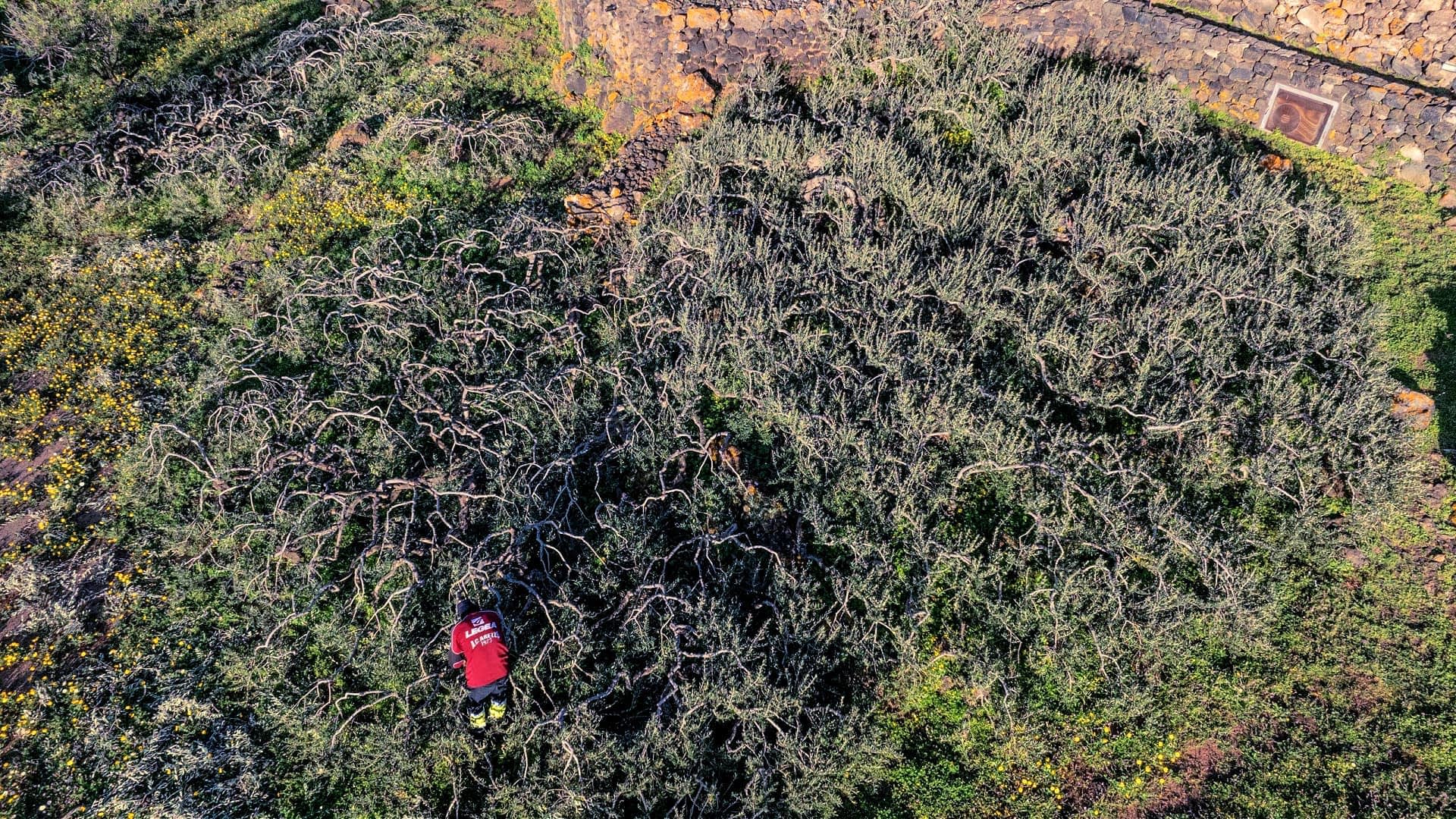
“The limited water supply made it difficult or even impossible to carry out traditional olive farming,” he added.
The practice initially consists of forcing the branches of newly planted or very young olive trees toward the ground, using ropes and stones until they acquire the horizontal direction.
As the new shoots sprout, those growing upwards must be pruned, while those growing downwards are left to grow.
“Some believe that it is necessary to leave shoots to grow all along the main branches, while others leave shoots only on the main branches’ final portion,” Rampini said.
“These variations are part of the wealth of information that Resilea and the University of Palermo aim to collect and transmit to the new generations throughout a project currently underway,” he added. “It is giving us great satisfaction, as the students involved are enthusiastic and are learning quickly.”
Based on a multidisciplinary and experiential approach, students aged ten to 17 learn the olive farming technique from elderly growers, with the support of the university team that collects the information.
Supervisors draw reports and produce documentaries during field activities dedicated to those in the final high school year.
“The students immediately understand this is a peculiar agricultural context, shaped by terraces and dry stone walls, and that the prostrate olive trees are embedded in it,” said Antonio Motisi, a professor of arboriculture at the University of Palermo and project coordinator.
“Indeed, we cannot think about the olive tree and the other tree species on the island without taking into account the presence of the dry stone walls,” he added.
Pantelleria is dotted with terraces defined by dry walls, which have been built over centuries with volcanic stones removed from the ground to make it cultivable.
Along with Pantesco’s garden, an enclosure used to cultivate citrus fruits, and the dammuso, both made of stone, the dry wall is emblematic of the local architecture.
“Essentially, a small climatic microcosm is formed by the one-meter wall that bounds the terrace and the olive tree within its height,” Motisi said. “We do not know any comparable olive cultivation type in the Mediterranean.”
Most of the olive trees are Biancolilla, and some varieties, probably also from Tunisia, are yet to be identified.
Pruning is done in winter and summer and plays a key role in the olive farming system. Unlike conventional pruning methods, this technique excludes return cuts.
The aim is to avoid undue water stress on the olive tree when developing new shoots.
“After conventional pruning is performed, vigorous shoots and suckers emerge,” Motisi said. “In this case, instead, the wood of the main branches is left to age precisely to contain that vigorous development and to prevent the plant from being in distress during summer. And this fosters the plant’s flowering and fruit setting.”
Due to the tree’s horizontal development, a peculiar training system is required. The main branches are left to grow long, and when they are about to touch the ground, a stone is placed between the wood and soil to avoid contact.
In contrast, the branches of very large trees can often be encouraged to touch the ground and take root to reinvigorate themselves.
“In this case, when a branch reaches a certain length, like four or five meters, the portion that touches the soil shall be buried, so that a new root takes hold in the underground point and revitalizes the branch as it continues to grow,” Motisi explained.
In its 85 square kilometers, Pantelleria includes an 836-meter-tall mountain and various pedoclimatic conditions to which farmers have adapted. Depending on the area, different pruning and training approaches are used.
“The general rule includes several exceptions,” Rampini said. “For example, in Sibà, one of the highest districts, some plants have spiral-shaped branches, which probably allowed farmers to gain space. The olive trees are 150 square meters in other areas, sometimes extending over more terraces.”
The large canopies cover the terrace surface, protecting the soil from insolation and limiting moisture evaporation, reducing water consumption.
“In this context, everything aims to reduce the tree’s water use,” Motisi said. “The dry stone wall also plays a role, as it mitigates the effect of wind by slowing down the air stream and consequently limiting the water losses due to transpiration.”
”Also, it probably induces microclimatic dynamics that favor the condensation of humidity in the air, a very complex aspect we are investigating,” he added.
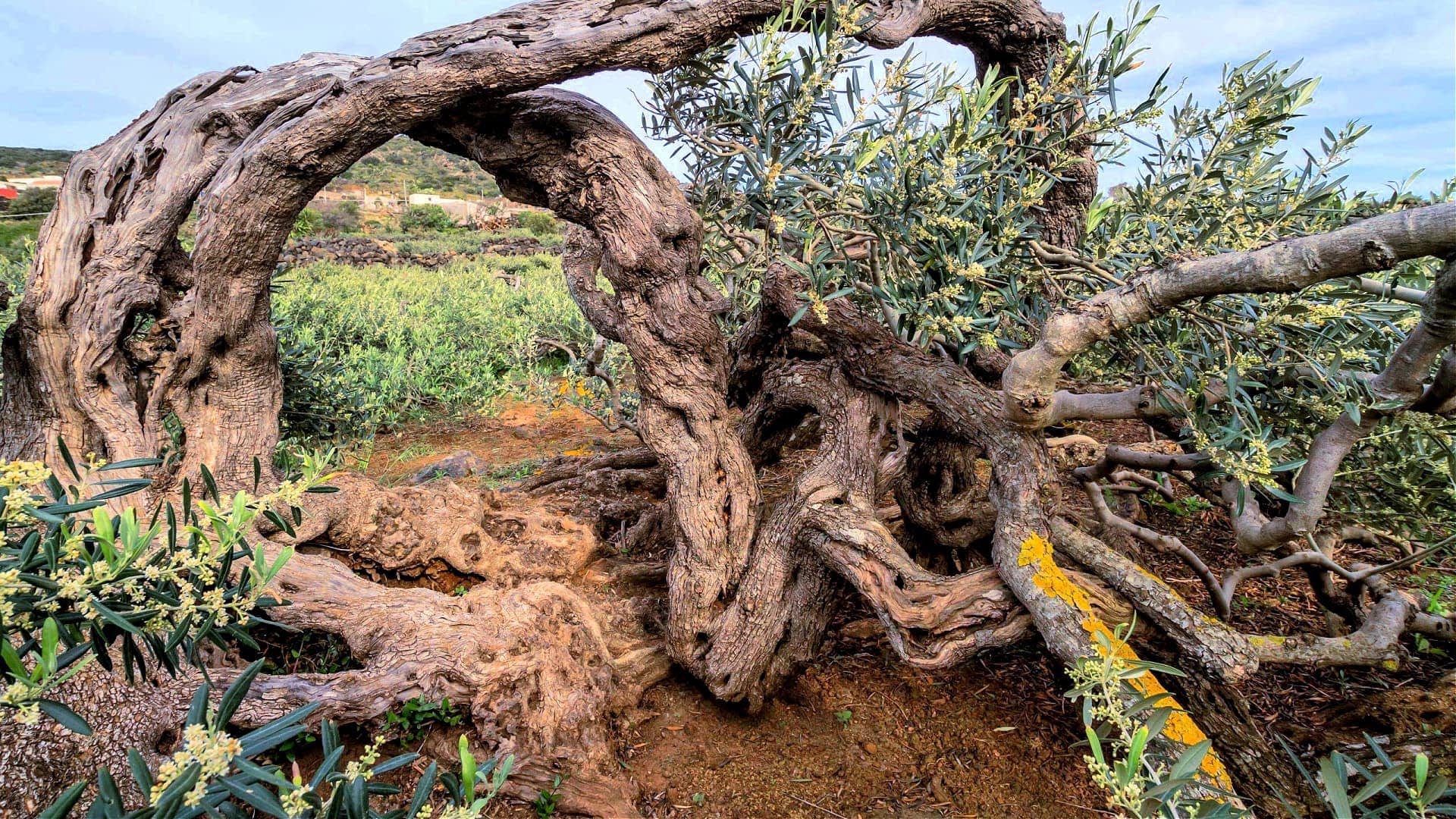
Prostrate branches of an olive tree trained according the tecnique devised by the growers on Pantelleria island. (Photo: Gianpaolo Rampini)
According to available data, Pantelleria’s cultivated surface area fell from more than 80 percent in the middle of the last century to less than 20 percent today, suggesting many neglected orchards.
Resilea has been committed to recovering abandoned olive groves and producing extra virgin olive oil for several years. Now, the association is planning to create a community company.
“We believe that an economic income for the small producers on the island is necessary to better protect these trees, many of which are centuries-old, and this sustainable and resilient farming practice,” Rampini said. “Working in such a particular environment requires much effort and high costs, as mechanical means cannot be used and everything is done by hand.”
“Our goal is to make this practice economically sustainable, allowing producers to supervise the whole productive chain,” he added.
The transportation of the olives, which are sent by ship to Trapani, Sicily, within hours of being picked and crushed in a local mill, also creates extra costs.
Farmers on the island are also at risk if the ferry is canceled for days due to bad weather, delaying fruit delivery and reducing quality.
Resilea’s plan involves building a company-owned milling facility to prevent these issues and ensure increased functionality.
“There is a good mill in Pantelleria, but we need different equipment for our purpose,” Rampini said. “We seek to set up a state-of-the-art two-phase technology that can work well with small volumes of olives, combined with a storage facility, a bottling machinery and a byproduct reuse system.”
With the value of sustainability at its core and the ambition of being comprehensive, the project includes a research component.
“We are acting in accordance with the circular economy principles,” Rampini said. “Among the players working to create the community company is PlantaRei Biotech, a startup directed by Elena Sgaravatti focused on high value-added products from production waste. It is currently studying the olive leaves of these trees for the extraction of polyphenols.”
“We are glad to say that the local public institutions are supporting our project,” he concluded. “We can produce high-quality extra virgin olive oil, contributing to sustainable development. Revenues from sales will be reinvested to empower the small producers and to safeguard such a valuable landscape, environmental and cultural heritage.”
Share this article


